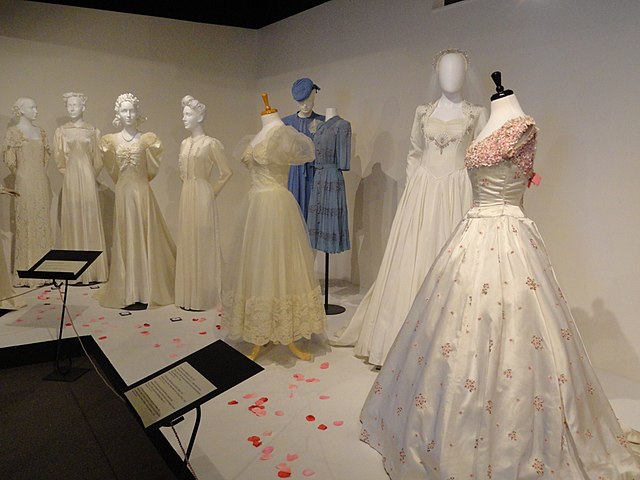
Dresses Through the Decades: A Look at Style Trends
Fashion is a powerful form of self-expression, and one of the most versatile pieces of clothing that reflects this is the dress. Over the decades, dresses have evolved dramatically, mirroring societal changes, cultural movements, and advances in fabric technology. In this article, we’ll take a captivating journey through the decades, examining how dress styles have transformed, and celebrating the unique characteristics of each era.
The Roaring Twenties: Flapper Dresses
The 1920s, often referred to as the Roaring Twenties, was a time of liberation and excitement, especially for women. Flapper dresses, characterized by their loose fit, dropped waistlines, and fringe details, epitomized the spirit of this decade. Women began to embrace a more androgynous silhouette, moving away from the constrictive styles of the past. The iconic flapper look was completed with bobbed hair, cloche hats, and beaded accessories, reflecting a newfound freedom and a break from traditional gender norms.
The Fabulous Forties: Utility Dresses
The 1940s were marked by World War II, which significantly impacted fashion. Due to fabric shortages, dresses were designed for practicality and functionality. Utility dresses, often made from durable materials, featured simple lines and minimal embellishments. Popular styles included the shirtwaist dress, which emphasized a cinched waist and an A-line skirt. Despite the limitations of wartime, women continued to express their style, often accessorizing with bold hats and gloves. The era also saw the introduction of the “New Look” by Christian Dior in the late 1940s, which reintroduced femininity with nipped-in waists and full skirts.
The Swinging Sixties: Mod Dresses
The 1960s ushered in a cultural revolution that was vividly expressed through fashion. The Mod style dominated this era, with short, geometric-shaped dresses made from colorful fabrics. Designers like Mary Quant popularized the mini dress, which symbolized youthful rebellion and liberation. The iconic shift dress, often paired with knee-high boots and bold prints, became a staple of the decade. The 1960s also saw an increase in the use of synthetic fabrics, which allowed for more creative designs and vibrant colors.
The Disco Seventies: Bold and Glamorous Dresses
The 1970s were characterized by vibrant colors, patterns, and a sense of exuberance that reflected the disco culture. Dresses of this era often featured bold prints, bell sleeves, and maxi lengths. The wrap dress, designed by Diane von Furstenberg, gained immense popularity for its flattering fit and versatility. Sequins, fringe, and metallic fabrics were all the rage, perfect for a night out on the dance floor. This decade embraced individualism and self-expression, leading to a wide variety of styles from bohemian to glamorous.
The Eighties: Power Dressing
The 1980s brought about a new wave of feminism and empowerment, which was evident in the fashion of the time. Power dressing became the norm, with women donning strong silhouettes and bold colors. Dresses were often characterized by shoulder pads, cinched waists, and vibrant prints. The cocktail dress gained popularity, becoming a staple for formal events. Designers like Jean-Paul Gaultier and Thierry Mugler pushed boundaries with their avant-garde designs, making the 1980s a decade of daring fashion statements.
The Nineties: Minimalism and Grunge
The 1990s marked a shift towards minimalism and a more casual approach to fashion. Dresses became simpler, often featuring clean lines and muted colors. The slip dress, inspired by lingerie, became a fashion favorite, often layered with oversized flannels for a grunge aesthetic. This decade celebrated both comfort and style, allowing for a more relaxed attitude towards dressing. Iconic supermodels like Kate Moss and Linda Evangelista popularized effortless looks that defined a generation.
The New Millennium: Eclectic Styles
As we entered the 2000s, fashion became increasingly eclectic. Styles from previous decades made comebacks, and the internet began to influence trends significantly. Dresses now featured a mix of vintage aesthetics and modern designs, with influences from various cultures. Bodycon dresses, maxi dresses, and sundresses became staples in women’s wardrobes, each catering to different occasions and personal styles. The rise of fast fashion also meant that trends could shift rapidly, allowing for an ever-evolving landscape of styles.
Conclusion: The Timeless Appeal of Dresses
Dresses have undoubtedly been a canvas for artistic expression and societal change throughout the decades. From the flapper dresses of the 1920s to the eclectic styles of today, each era has left its mark on fashion, showcasing the versatility and timeless appeal of the dress. As trends continue to evolve, one thing remains constant: the power of a beautiful dress to make a statement and celebrate individuality.
Whether you’re looking for a casual summer dress or something more formal, shop our latest collection of stunning women’s dresses in NZ, sourced from the USA. From casual to formal, discover luxurious dresses perfect for any occasion. Celebrate your unique style and express yourself through the timeless elegance of dresses!
